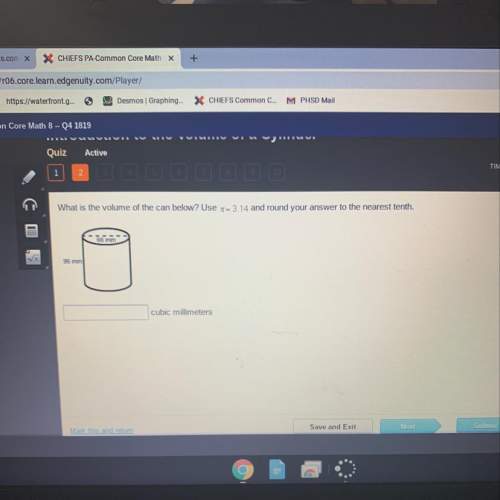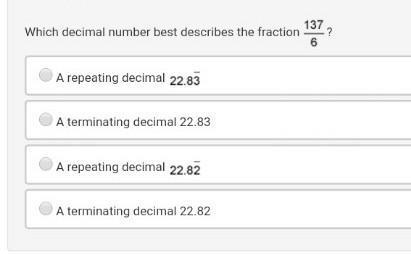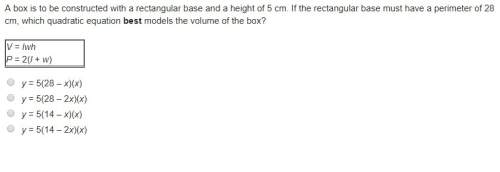
Mathematics, 21.11.2019 05:31 harmonytaylor13
The growth rate of escherichia coli, a common bacterium found in the human intestine, is proportional to its size. under ideal laboratory conditions, when this bacterium is grown in a nutrient broth medium, the number of cells in a culture doubles approximately every 15 min.(a)if the initial population is 10, determine the function q(t) that expresses the growth of the number of cells of this bacterium as a function of time t (in minutes). q(t)=10e^[ln(2)/15](b)how long would it take for a colony of 10 cells to increase to a population of 1 million? (round your answer to the nearest whole number.)

Answers: 3
Another question on Mathematics

Mathematics, 21.06.2019 20:00
Select the number of ways in which a line and a circle can intersect
Answers: 3

Mathematics, 21.06.2019 22:30
The difference of three and the reciprocal of a number is equal to the quotient of 20 and the number. find the number.
Answers: 2

Mathematics, 22.06.2019 01:00
First work with stencil one. use a combination of reflections, rotations, and translations to see whether stencil one will overlap with the original pattern. list the sequence of rigid transformations you used in your attempt, noting the type of transformation, the direction, the coordinates, and the displacement
Answers: 3

Mathematics, 22.06.2019 01:30
Which shaded region is the solution to the system of inequalities? y y[tex]\geq[/tex]-x+1
Answers: 3
You know the right answer?
The growth rate of escherichia coli, a common bacterium found in the human intestine, is proportiona...
Questions



Computers and Technology, 29.07.2019 23:30


History, 29.07.2019 23:30



Mathematics, 29.07.2019 23:30

Biology, 29.07.2019 23:30

English, 29.07.2019 23:30

Biology, 29.07.2019 23:30

Geography, 29.07.2019 23:30

Social Studies, 29.07.2019 23:30



Mathematics, 29.07.2019 23:30


English, 29.07.2019 23:30

Mathematics, 29.07.2019 23:30

Biology, 29.07.2019 23:30






